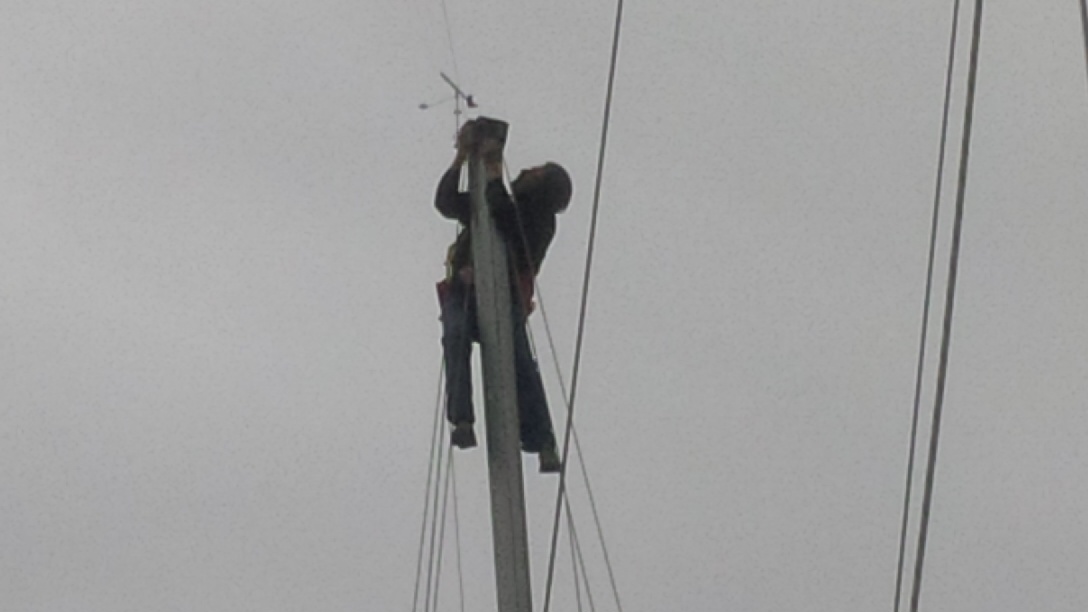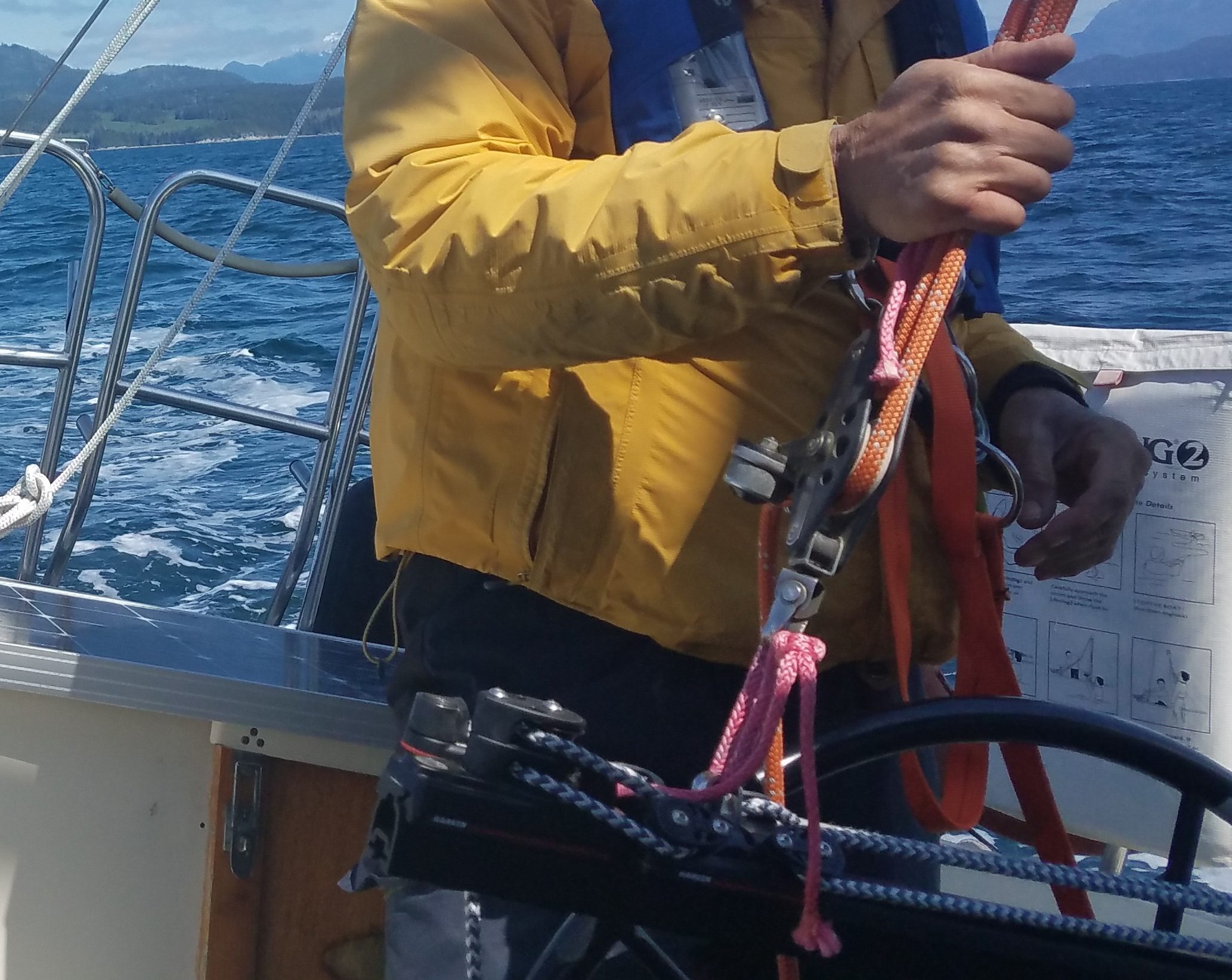Decatur GA, 21-OCT-2018 – A friend from Oregon told us that the only real shakedown for 3000 mile cruise is a 3000 mile cruise.* Our trip in 2016 proved his point; the list of things that broke ran three pages and almost everything on the list was my own fault.
Two years and 6000 miles later we came home from this year’s trip with no serious issues to report.
- 2018 was the year of leaks: there were four minor water leaks, three freshwater, one salt:
- The most annoying was a deck leak that would fill the starboard side aft cabin locker. I spent a few years trying to find and patch this leak. Finally, I gave into the desire to fix the symptom and forget about the problem: I drilled a half-inch hole in the side of the locker so the water drains into the bilge.
- A very small black water leak in the head. When I replaced the vertical pump tube I was unable to get the heat-pliable rigid hose to seal on the hose barb. Perhaps more time with the heat gun at a dock would’ve fixed it. After a few days there would be an odor and a small amount of water. A quick wipe with a bleach-soaked cloth would clear it up. This is on the to do list.
- The third leak was the rudder head. Cleaning the threads on the locknut so that it could retract enough for the cap nut to seal, fixed the leak.
- The fourth leak was in the freshwater bladder on the port side of the boat, but, we didn’t find the leak until we returned from the trip. Drinking water dripping into the bilge bedeviled us the entire trip. The leak is a pinhole where the bladder creased to fit into a locker under the salon banquette. The leak could have been caused merely by the age of the bladder, which is 15 years old, or by completely filling the bladder putting pressure on the wrinkle.
Plastimo sells a replacement bladder without the protective cover or connectors for a very reasonable price.

- In the first few weeks of the trip we replaced our masthead antenna and cable, which fixed our radio problems.
- The two major technical problems, air in the fuel lines and recurring stove problems, which had each plagued us for years, were solved on this trip.

- We have never gotten our Taylor’s stove to work for long without clogging up the burners, or billowing black smoke. One black smoke episode permanently colors a white head liner gray.
We had been in long conversations with John Gardner who sold us the stove. John assured us the number one diesel was the proper fuel to burn in the stove. Number one diesel is kerosene, however, what we needed was 1-K kerosene, nothing else will work.
That John was not aware of this raises all sorts of questions.
I posed the problem at the cruisers forum and received unanimous answers that 1-K kerosene was the only thing to use. Only one respondent said that I really wanted to hear: he had used number one diesel, it clogged up his stove. When he switched over to 1-K kerosene the problem went away.
I plan to replace the headliner for the third time, this time hoping that it will stay white.
- The air in the fuel line: one day we noticed that we were no longer getting air in the fuel line when we bled it. We were able start the engine with a press of the starter button reliably.
One day the problem returned. We tracked it to a dirty fuel filter. After replacing the fuel filter the problem went away again. This seems to mean that the air leak is on the engine side of the fuel filter and air leaks in when the vacuum rises to a certain amount. I will double clamp any connection along the way. The hose is continuous from the fuel filter to the engine, so there are very few places to clamp. Why it initially stopped, when the filter was clean,is still a mystery.

- The hardware that attaches the multipart block and cam cleat to the mainsheet traveler is forty-three years old and disintegrated piece by piece. We used the dyneema shackles that I made to reattach the block each time another part failed.
- The distance from the tack of the new, heavy 135% headsail to the attachment point on the stem is long enough to allow the tack to move so far aft that the pennant cuts into the sail locker cover.
I’ll fix this by making a very small dyneema shackle to hold the tack of the sail closer to the fore stay. The dyneema shackle is slippery enough to easily slide up and down for stay, and so slippery that I do not expect it will wear.
- The O-rings for the watertight compartments on the Portland Pudgy leaked. The manufacturer sent us replacement O-rings that they manufactured.
That’s everything! We didn’t have any parts air-freighted in, we never lost a day doing repairs across the six month trip.
Were we just lucky, or did the combination of proper maintenance and experience save us from these failures?
*His failures, including a complete transmission failure dwarfed our first year failures.


We’ve got some leaks as well that need to be sorted out. It’s so annoying – you find one, fix it and another one pops up in its place. 🙂
Ellen, yes. I think we all hold on to the myth that some day we’ll fix all of these types of issues. Thanks for reading. I’ll be posting our costs for the year and the AK trip in a day or so (I’m behind). I’d like to link to your posts on that.
You night enjoy this post from our first year sailing north: http://carobabbo.com/2016/10/17/status-statistics-and-did-anything-not-break/